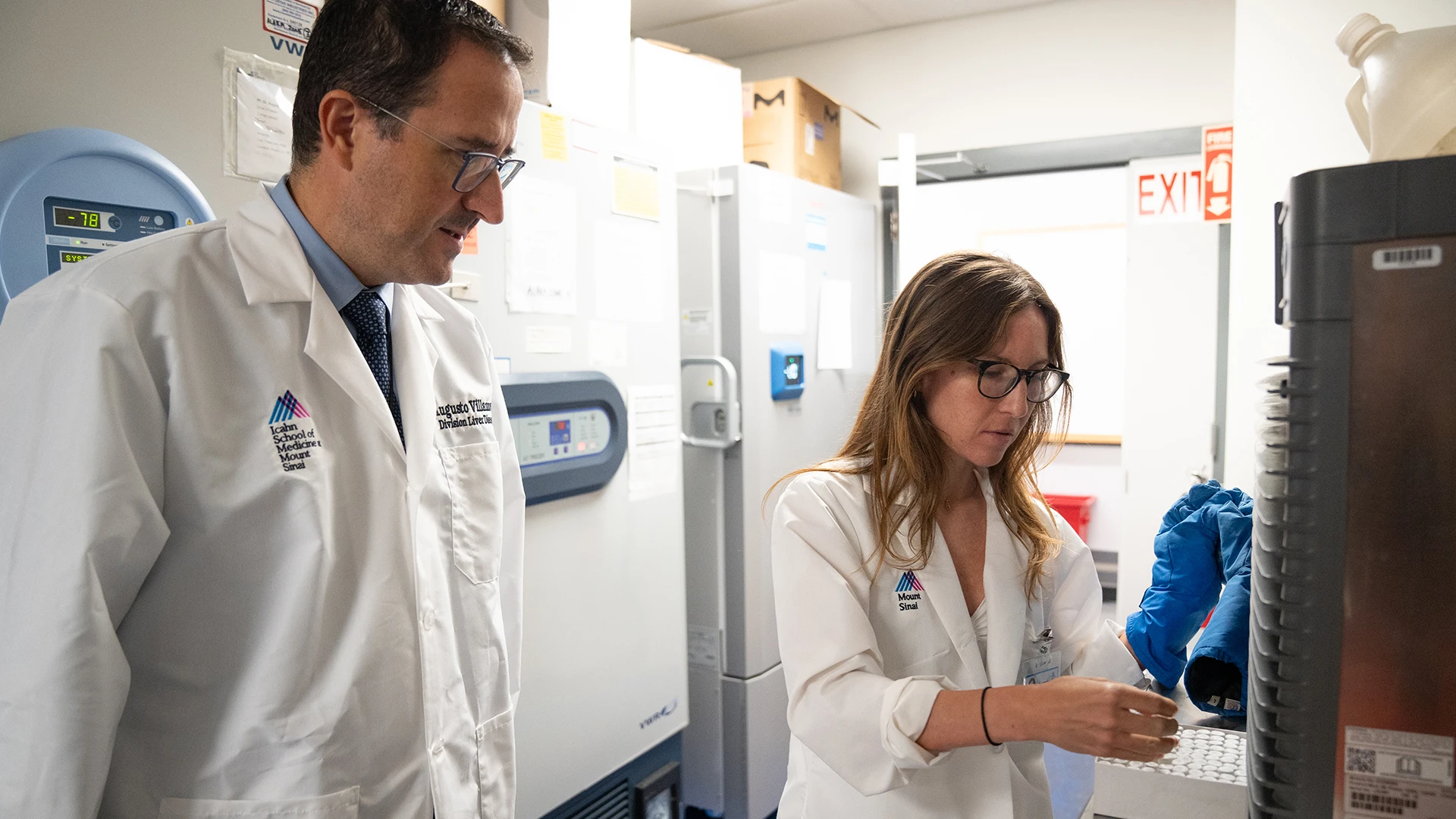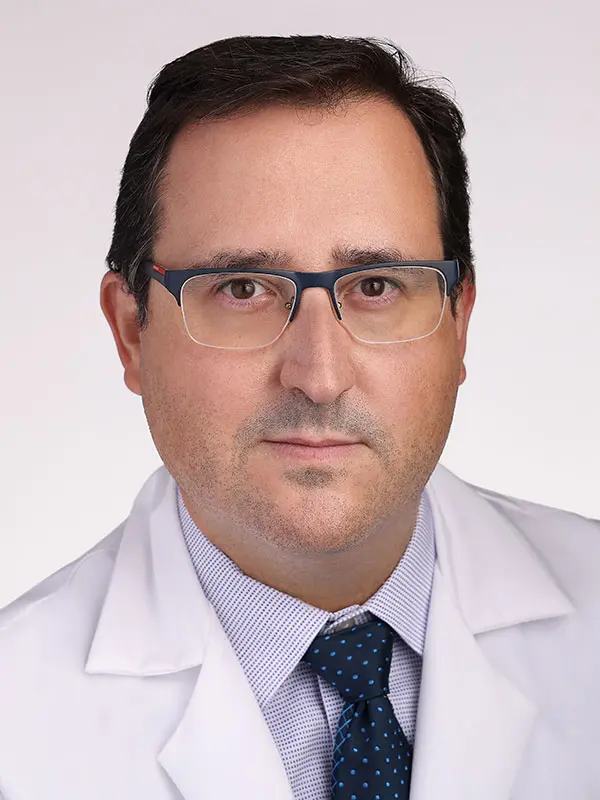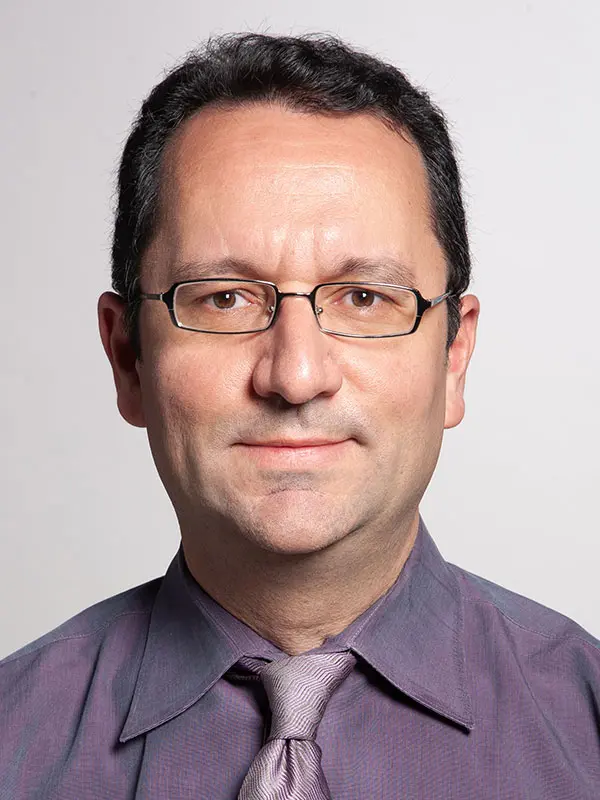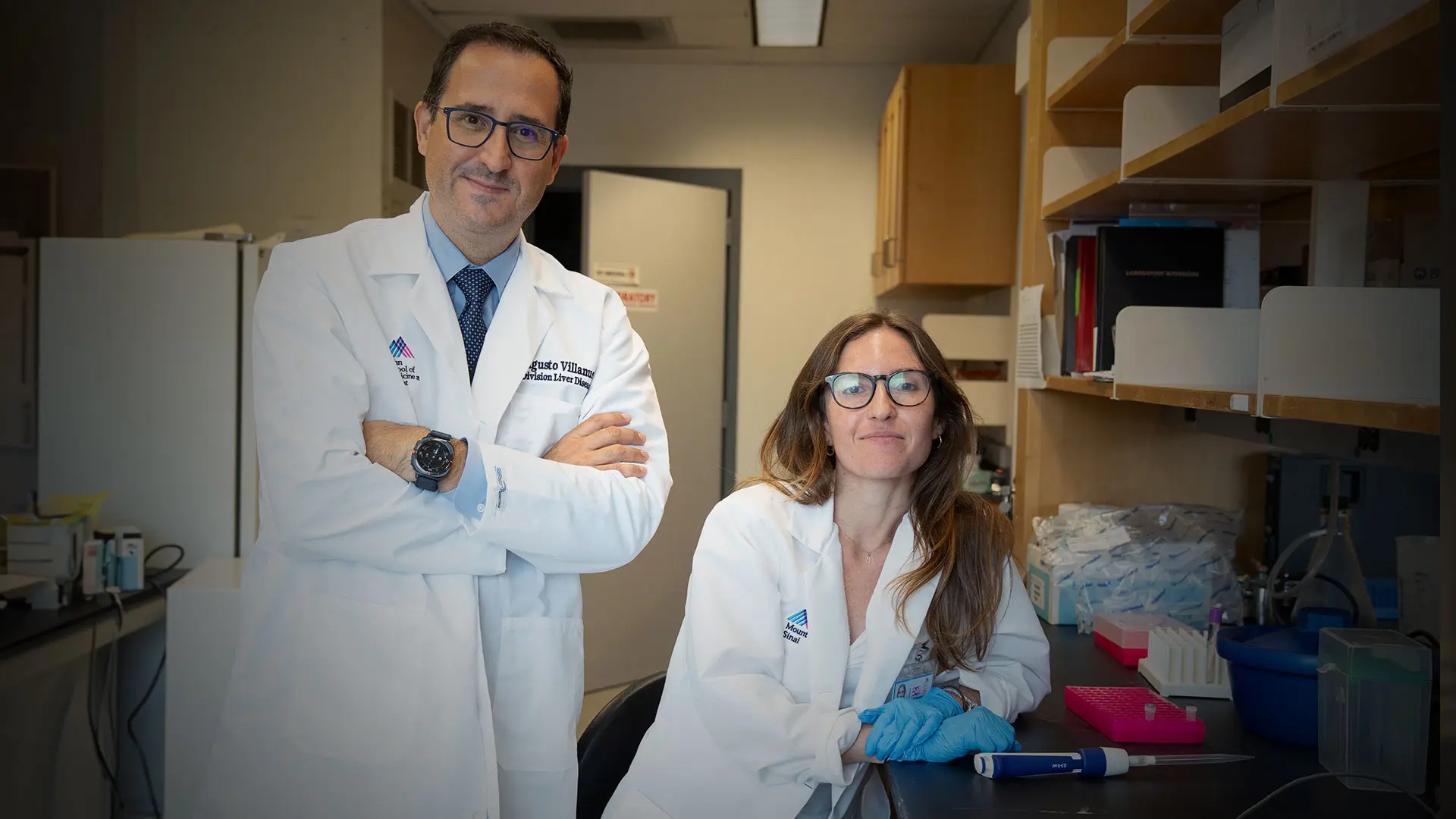While five-year survival of individuals with hepatocellular carcinoma (HCC) remains a dismal 18 percent, studies show that enrollment in early surveillance programs could double that rate. To the endless frustration of clinicians and public health authorities, however, only 25 percent of high-risk patients opt to pursue that potentially life-saving course.
For Augusto Villanueva Rodriguez, MD, PhD, a Mount Sinai researcher and physician, a relatively simple blood-based test known as liquid biopsy could potentially turn the survival odds decidedly in favor of patients. He and his lab are pushing the borders of the emerging and highly promising science of early detection biomarkers through small RNA expression signatures of circulating extracellular vesicles.
Their newest effort, led by Dr. Villanueva and co-Principal Investigator Bachir Taouli, MD, and funded by the National Institutes of Health, is the largest study of its type to date. It involves 2,500 patients from the New York City area, with the overarching goal of measuring the impact of liquid biopsy compared to the current standard of care—abdominal ultrasound and serum alpha-fetoprotein—for detection of early-stage HCC. A secondary objective led by Dr. Taouli, Professor of Diagnostic, Molecular and Interventional Radiology at the Icahn School of Medicine at Mount Sinai, is to integrate MRI-based radiomics models with liquid biopsies to better characterize indeterminate nodules in cirrhosis detected during surveillance
“Our goal is to develop a minimally invasive, blood-only surveillance biomarker for hepatocellular carcinoma that would significantly increase patient compliance by making the process easier than ever before,” says Dr. Villanueva, Associate Professor of Medicine (Hematology and Medical Oncology, and Liver Diseases) at Icahn Mount Sinai. “We know that if we’re able to detect a tumor in its early stages, we can cure patients in more than 70 percent of cases.”

Augusto Villanueva Rodriguez, MD, PhD, and his lab team, including lead Clinical Research Coordinator Blanca Botia, right, are working to develop a blood-based liquid biopsy that can detect early-stage hepatocellular carcinoma.
In a field of oncology that has many new immunotherapies yet few ways to determine which patients will benefit the most from each, scientists are diligently looking for novel pathways based on the molecular makeup of the tumor. This pursuit includes leveraging information from different parts of the tumor given its heterogeneity—information that is not often available. Mount Sinai researchers have learned from their past studies that small noncoding RNA clusters, which play a key role in regulating gene expression in tumor development and biology, are among the most encouraging new diagnostic tools to address that urgent clinical need. Perhaps their greatest advantage is 86 percent sensitivity and 91 percent specificity when it comes to detecting early-stage HCC.
“In recent years, extracellular vesicles, especially exosomes, have been identified as promising sources for clinically relevant molecular biomarkers for multiple cancers due to their quick and easy accessibility,” explains Dr. Villanueva. “At the same time, small RNAs encapsulated in exosomes have been emerging as important diagnostic biomarkers for detecting cancer in its early stages.”
The Villanueva lab is now applying this growing body of evidence to its newest investigation of at-risk New York City patients with cirrhosis of various etiologies. The overarching goal of this National Institutes of Health-funded study is to determine the clinical role of liquid biopsy technologies—more specifically, cell-free DNA fragment analysis and 3-small RNA signatures from extracellular vesicles in plasma. A secondary objective is to integrate MRI-based radiomics models with liquid biopsies to better characterize indeterminate nodules in cirrhosis detected during surveillance. That work is being done in collaboration with scientists from Columbia University, Weill Cornell Medicine, and Albert Einstein College of Medicine.
“Our project is very timely and uniquely positioned to improve early HCC detection through a rigorous and systemic evaluation of liquid biopsy,” emphasizes Dr. Villanueva. “We believe this could become a powerful tool in the hands of physicians and public health officials for transforming patient surveillance and thus helping to reduce deaths from liver cancer, which have shown the highest increase of all cancers during the past 10 years.”
Featured

Augusto Villanueva Rodriguez, MD, PhD
Associate Professor of Medicine (Hematology and Medical Oncology, and Liver Diseases)

Bachir Taouli, MD
Professor of Diagnostic, Molecular and Interventional Radiology
